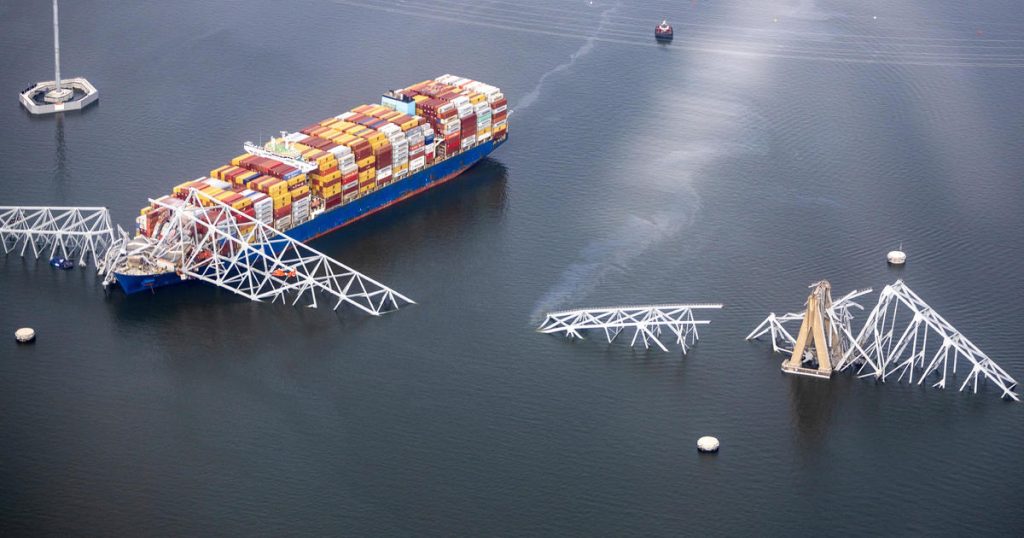The Francis Scott Key Bridge in Baltimore collapsed after being struck by a large container ship, leading to vehicles and people falling into the Patapsco River. Maryland Governor Wes Moore declared a state of emergency and commended the rescue efforts of first responders. The fire department received early morning 911 calls reporting the incident, with uncertainty about the number of vehicles on the bridge at the time. U.S. Homeland Security Secretary Alejandro Mayorkas stated that there were no indications of intentional harm in the collision.
The cargo ship involved in the collision was reportedly heading for Sri Lanka, and the impact left the Francis Scott Key Bridge in ruins. All crew members aboard the ship were reported safe, with no injuries reported. The bridge, a vital connection used by tens of thousands of commuters daily, was closed in both directions, leading to traffic detours in the area. Rescue efforts continued as authorities searched for missing individuals and assessed the extent of the damage caused by the collapse.
The collapse left residents shocked and concerned as they witnessed the aftermath of the bridge disaster. The Baltimore Mayor reported that six people, all contractors working on the bridge at the time, were unaccounted for. Authorities were conducting search and rescue operations to ensure the safety of those involved in the incident. Transportation Secretary Pete Buttigieg offered support and coordination with local authorities in managing the aftermath of the bridge collapse. The timeline of events and details surrounding the cause of the collision were still under investigation.
The collapse of the Francis Scott Key Bridge raised questions about the safety and maintenance of key infrastructure in Baltimore. The bridge, named after the author of “The Star-Spangled Banner,” played a crucial role in connecting communities and facilitating transportation in the region. The impact of the incident was felt not only by residents but also by officials and emergency responders who worked tirelessly to address the crisis. As the situation unfolded, efforts were made to keep the public informed about road closures and alternative routes to alleviate the traffic disruptions resulting from the bridge collapse.
The incident highlighted the importance of emergency preparedness and rapid response in the face of unexpected disasters. State and federal agencies collaborated to address the immediate needs of those affected by the bridge collapse and ensure the safety of all individuals involved. The resilience and unity shown by the community in times of crisis underscored the importance of coming together to overcome challenges and rebuild vital infrastructure. As authorities continued their investigations and recovery efforts, the focus remained on supporting those impacted by the tragic event and preventing similar incidents in the future through enhanced safety measures and infrastructure maintenance.


